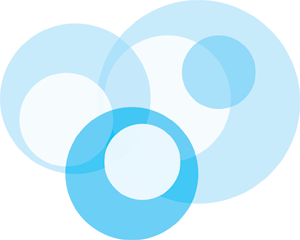





 Order Treatment Online
Order Treatment Online
 Diseases and Conditions
Diseases and Conditions
Psoriasis is a common skin condition that causes skin redness and irritation. Most persons with psoriasis have thick, red skin with flaky, silver-white patches called scales.
Psoriasis is a very common condition. The disorder may affect people of any age, but it most commonly begins between ages 15 and 35. It can appear suddenly or slowly. In many cases, psoriasis goes away and then flares up again repeatedly over time. The condition cannot be spread to others.
Psoriasis seems to be an inherited disorder. That means it is passed down through families. Doctors think it probably occurs when the body's immune system mistakes healthy cells for dangerous substances. See also: Inflammatory response
Skin cells grow deep in the skin and normally rise to the surface about once a month. In persons with psoriasis, this process is too fast and dead skin cells build up on the skin's surface.
The following may trigger an attack of psoriasis or make the condition more difficult to treat:
· Bacteria or viral infections, including strep throat and upper respiratory infections
· Dry air or dry skin
· Injury to the skin, including cuts, burns, and insect bites
· Some medicines, including antimalaria drugs, beta-blockers, and lithium
· Stress
· Too little sunlight
· Too much sunlight (sunburn)
· Too much alcohol
In general, psoriasis may be severe in persons who have a weakened immune system. This may include persons who have:
· AIDS
· Autoimmune disorders (such as rheumatoid arthritis)
· Cancer chemotherapy
Up to 30% of people with psoriasis may also have arthritis, a condition known as psoriatic arthritis. Psoriasis may also affect the nails. About 10% of people with psoriasis have visible changes only in the nails.
Persons with psoriasis have irritated patches of skin. The redness is most often seen on the elbows, knees, and trunk, but can appear anywhere on the body. For example, there may be flaky patches on the scalp.
The skin patches or dots may be:
· Dry and covered with silver, flaky skin (scales)
· Pink-red in color (like the color of salmon)
· Raised and thick
Other symptoms may include:
· Genital lesions in males
· Joint pain or aching (psoriatic arthritis)
· Nail changes, including nail thickening, yellow-brown spots, dents (pits) on the nail surface, and separation of the nail from the base
· Severe dandruff on the scalp
Psoriasis may affect any or all parts of the skin. There are five main types of psoriasis:
· Erythrodermic -- The skin redness is very intense and covers a large area.
· Guttate -- Small, pink-red spots appear on the skin.
· Inverse -- Skin redness and irritation occurs in the armpits, groin, and in between overlapping skin.
· Plaque -- Thick, red patches of skin are covered by flaky, silver-white scales. This is the most common type of psoriasis.
· Pustular -- White blisters are surrounded by red, irritated skin.
Your doctor will look at your skin. Diagnosis is usually based on what the skin looks like.
Sometimes, a skin biopsy is done to rule out other possible conditions. If you have joint pain, your doctor may order x-rays.
The goal of treatment is to control your symptoms and prevent infections.
In general, three treatment options are used for patients with psoriasis:
· Topical medications such as lotions, ointments, creams, and shampoos
· Body-wide (systemic) medications, which are pills or injections that affect the whole body, not just the skin
· Phototherapy, which uses light to treat psoriasis
Most cases of psoriasis are treated with medications that are placed directly on the skin or scalp:
· Cortisone creams and ointments
· Creams or ointments that contain coal tar or anthralin
· Creams to remove the scaling (usually salicylic acid or lactic acid)
· Dandruff shampoos (over-the-counter or prescription)
· Moisturizers
· Prescription medicines containing vitamin D or vitamin A (retinoids)
If you have an infection, your doctor will prescribe antibiotics.
You may try the following care techniques at home:
· Oatmeal baths may be soothing and may help to loosen scales. You can use over-the-counter oatmeal bath products. Or, you can mix one cup of oatmeal into a tub of warm water.
· Sunlight may help your symptoms go away. Be careful not to get sunburned.
· Relaxation and antistress techniques may be helpful. The link between stress and flares of psoriasis is not well understood, however.
Some people may choose to have phototherapy. Phototherapy is a medical procedure in which your skin is carefully exposed to ultraviolet light. Phototherapy may be given alone or after you take a drug that makes the skin sensitive to light. Phototherapy for psoriasis can be given as ultraviolet A (UVA) or ultraviolet B (UVB) light.
Persons with very severe psoriasis may receive medicines to suppress the body's immune response. These medicines include methotrexate or cyclosporine. (Persons who have psoriatic arthritis may also receive these drugs.)
Newer drugs called biologics specifically target the body's immune response, which is thought to play a role in psoriasis. These drugs are used when other treatments do not work. Biologics approved for the treatment of psoriasis include:
· Adalimumab (Humira)
· Alefacept (Amevive)
· Etanercept (Enbrel)
· Infliximab (Remicade)
· Stelara
